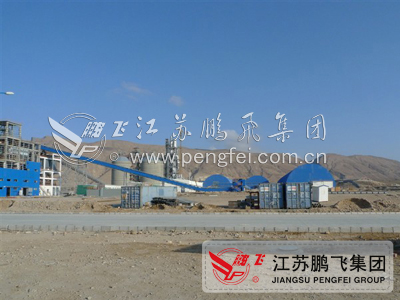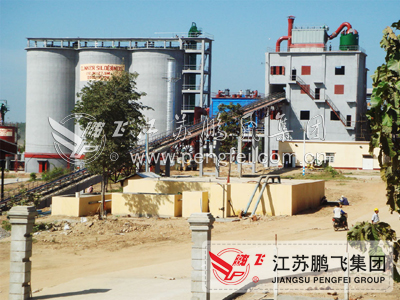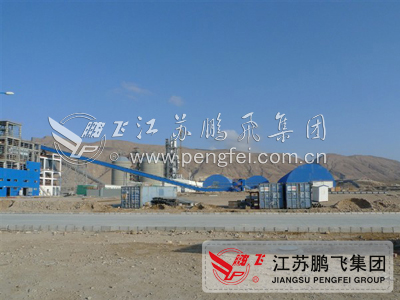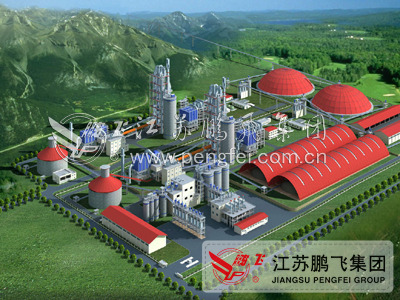The cement grinding station with an annual output of 1 million tons adopts the technology of grinding clinker and slag separately. The clinker grinding adopts the double loop extrusion combined grinding process composed of PFG120-50 roller press and Φ 3.2m × 13m cement mill, and the slag grinding adopts the loop flow grinding system composed of Φ 3.2m × 13m mill and high-efficiency powder separator. The production process of the grinding station is stable, achieving the goals of high quality, high yield, and low consumption.
Main equipment and processes
1. Design of clinker grinding production line. After gypsum, rotary kiln clinker, and limestone are measured by a belt scale, the prepared mixture is transported by a belt conveyor to the elevator and sent to the stable flow weighing bin. During this process, the materials are removed of magnetic metals by a iron remover, and then mixed and fed into a roller press. The extruded materials are all lifted by a cake elevator and sent to a dispersing classifier. Coarse materials larger than 2.5mm enter the stable flow weighing bin and are then squeezed together with the mixture into the roller press. Fine materials smaller than 2.5mm enter the mill for grinding. The ground materials and the measured fly ash are sent to the mixed material elevator through the tail conveyor chute, and then sent to the K-type internal circulation powder selection machine through the selection powder machine conveyor chute. The coarse powder of the powder selection machine returns to the mill, and the fine powder is sent back to the mill. The air conveyor chute enters the finished product elevator and enters the finished product warehouse. After being purified by the dust collector at the tail of the mill, the dust containing gas is discharged into the atmosphere by the exhaust fan, and the collected fine powder is fed into the mixture elevator.
2. Design of slag grinding production line. Gypsum, dry slag, and fly ash are measured by a belt scale, and the prepared mixture is sent to a grinding machine for grinding by an elevator. During this process, the material is removed of magnetic metals by an iron remover, and the ground material is sent to the mixture elevator through a tail conveyor chute. It is then divided into two parts and sent to a K-type ultra-fine specialized high-efficiency powder selector through the selected powder machine conveyor chute. The coarse powder of the powder selector returns to the grinding machine, while the cement product is collected by an air box pulse bag dust collector. The fine powder is sent to the finished product elevator through an air conveyor chute and enters the finished product warehouse. The dust containing gas from the grinding process is selected as the primary air for the K-type ultra-fine high-efficiency powder selection machine, while fresh air is selected as the secondary and tertiary air for the powder selection machine. The dust containing gas is purified by the pulse bag filter in the air box and discharged into the atmosphere through the exhaust fan.
3. Mixing design of slag powder and clinker powder. In the separate grinding production process, in addition to meeting the fineness requirements, it is also necessary to pay attention to accurate measurement and uniform mixing of clinker powder and slag powder. Therefore, we chose a spiral measuring scale as the measuring device and an air conveying chute, which can not only be used as a mixing device but also as a conveying device. The spiral metering scale consists of an overflow single tube spiral and a metering single tube spiral. The former stabilizes the flow and ensures uniform and timely feeding, while the latter measures accurately and stably; The air conveying chute uses the principle of fluidization to transport materials, causing the slag powder and clinker powder to continuously roll and stir during the conveying process.
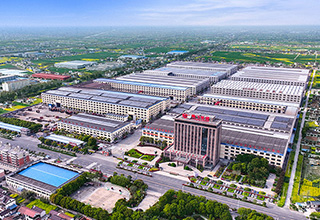
 Real time updates on cutting-edge information, presenting Pengfei and industry trends in a timely, comprehensive, and intuitive manner.
Real time updates on cutting-edge information, presenting Pengfei and industry trends in a timely, comprehensive, and intuitive manner.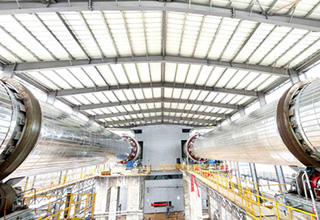
 We firmly believe that talent is the foundation of enterprise development. We adhere to the talent concept of "people-oriented, co creation and win-win", respect the personality and creativity of each employee, and are committed to providing employees with broad development space and a fair competitive platform.
We firmly believe that talent is the foundation of enterprise development. We adhere to the talent concept of "people-oriented, co creation and win-win", respect the personality and creativity of each employee, and are committed to providing employees with broad development space and a fair competitive platform.
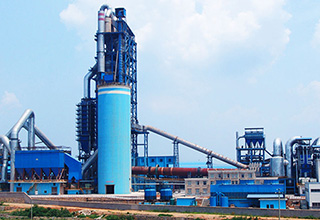

 中文
中文 English
English
